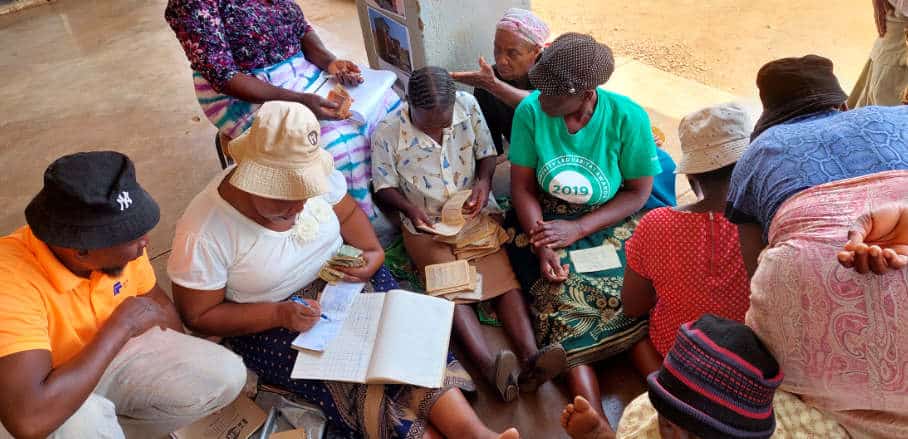Community Mobilisation Drives Social Protection and Resilience in Zimbabwean Informal Settlements
Zimbabwe’s informal settlements find empowerment through grassroots initiatives. From housing savings to inclusive infrastructure, Teurai Anna Nyamangara showcases how community mobilisation leads to social protection and resilience.
In Zimbabwean urban settings, informal settlements are frequently labeled as illegitimate, which has significant implications for their inhabitants. Often, they are excluded from social protection programs, and they are not considered by governing authorities.
However, with the establishment of the Zimbabwe Homeless People’s Federation in 1997 everything changed. Born out of a housing crisis which primarily affected low-income communities, the federation now has over 300 grassroots housing savings schemes.
This truly is a story of community empowerment and resilience, social protection, and the inclusive provision of infrastructure in urban settlements.
Saving Schemes Empower Communities
Starting with 20 to 50 families, the grassroots housing savings schemes became the smallest unit of organisation. These schemes not only pooled resources for health, land, they also established an urban poor fund, that proved to be instrumental in enhancing social protection for residents in informal settlements. But the Harare’s Hatcliffe Extension and Dzivarasekwa Extension only marked the beginning of a nationwide movement.
Moreover, the Zimbabwe Homeless People’s Federation also established the Gungano Urban Poor Fund, a pivotal initiative aimed at elevating savings schemes within community self-help groups. Typically, these schemes are constrained by low incomes, however they were transformed into savings schemes capable of fostering a more expansive vision of societal transformation.
The Urban Poor Fund was instrumental in helping communities to recover from the challenges of the Covid-19 pandemic by providing loans for savings groups. to revitalise their income-generating projects and small businesses.
Beyond individual support, these funds demonstrated their capacity to uplift numerous savings groups and thus, contributed to the formation of an urban poor movement. As these savings groups unite, exchange knowledge, and extend mutual support, the Urban Poor Fund becomes a catalyst for collective growth and empowerment.
From Tenure to Transformation
The housing savings schemes focused on securing tenure for the residents, which in turn empowered them to build proper houses and gain access to essential services like water, sanitation, housing, and energy. Even though, the COVID-19 pandemic brought unprecedented challenges to informal settlements in Harare, the schemes proved to be a lifeline. Residents redirected savings meant for land to purchase essential food provisions, showcasing adaptability and resilience.
Challenges and Solutions in Social Protection Delivery
The diverse populations in informal settlements presented a range of challenges, spanning from healthcare to education. To address this, community-led assessments were conducted to understand specific needs, ensuring targeted responses. The issue of limited access to information was tackled through innovative communication strategies, which involved engaging community leaders, utilising local social media, and organising outreach initiatives. Additionally, the formation of savings groups provided financial support to informal workers, who often lack access to formal financial systems.
Another critical challenge was the coordination of many different stakeholders, especially during the pandemic. To address these fragmented efforts and inefficiencies, stakeholder meetings were initiated to establish effective coordination mechanisms. These meetings encouraged collaboration and joint planning to optimise the impact of social protection interventions.
Insights from the Inclusive Urban Infrastructure Project
The Inclusive Urban Infrastructure project aimed to understand how services can reach the poorest urban residents in places like Hopley, Hatcliffe Extension, Churu Farm, Budiriro Extension, Mucheke, and Victoria Ranch. By utilising community engagement, getting stakeholders involved, using surveys, photovoice, and even comics to collect data, the project learned a lot about how things worked. And these findings are having concrete impact, as these findings help to shape policies for inclusive service provision in urban areas.
In conclusion, the Zimbabwe Homeless People’s Federation convincingly shows the transformative power of community-led initiatives. From grassroots housing savings schemes to inclusive urban infrastructure projects, the journey underscores the importance of community empowerment, resilience, and coordinated efforts for effective social protection. As we celebrate these successes, the lessons learned become a roadmap for building sustainable and inclusive communities that thrive even in the face of challenges. Together, we can continue fostering positive change and building a future where no community is left behind.
